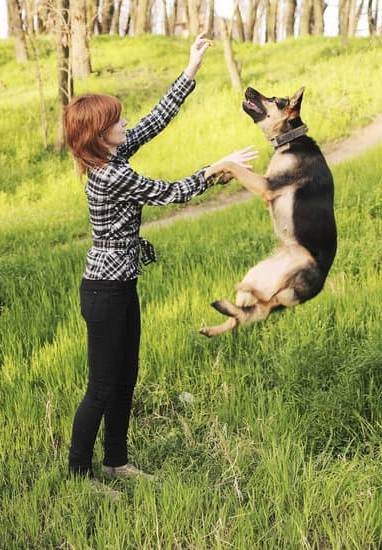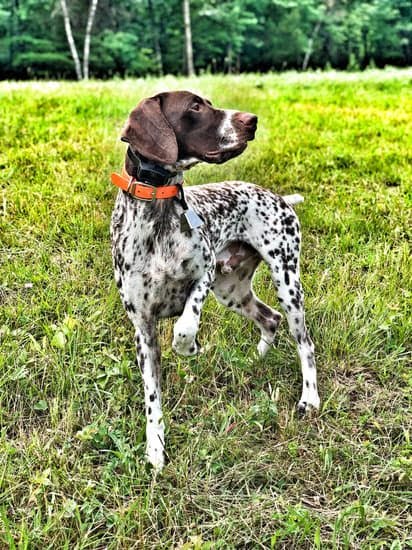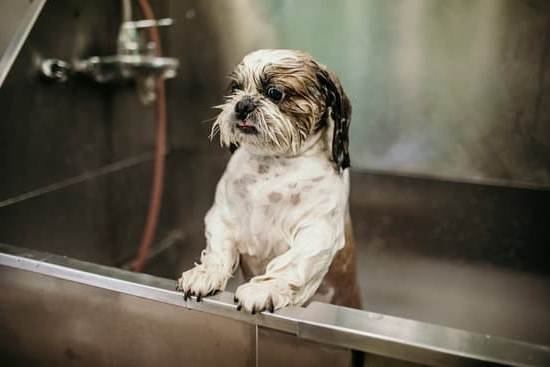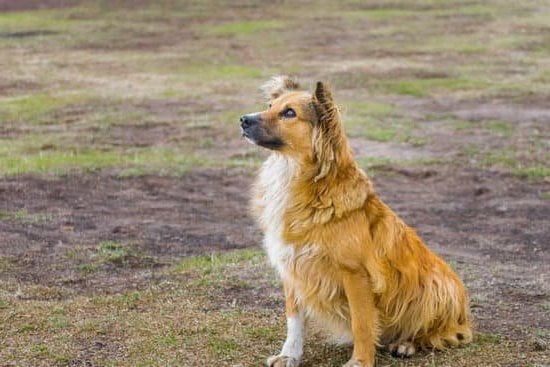House training an adult dog can be a daunting task, but with the right approach and consistency, it is certainly achievable. Understanding the importance of house training for adult dogs is crucial in addressing any existing behavioral issues and ensuring the well-being of your pet. This article will provide valuable insights into the benefits of house training, as well as practical strategies to help you effectively house train your adult dog.
One of the key factors in successfully house training an adult dog is to recognize the significance of this process. Not only does proper house training contribute to a clean and harmonious home environment, but it also has a positive impact on your dog’s behavior and overall well-being. However, there are challenges that come with house training adult dogs, including breaking established habits and addressing potential underlying reasons for their previous lack of training.
Assessing your adult dog’s background and habits is essential in determining the best approach to house training. By understanding any previous experiences or lack thereof that may have contributed to their current issues, you can tailor your training methods accordingly. Additionally, observing your dog’s behavior related to elimination will provide valuable insights into their habits and help in creating an effective house training routine.
Assessing Your Adult Dog’s Background and Habits
Understanding your adult dog’s background and habits is crucial when it comes to effectively house training them. There are several factors that may have contributed to your dog’s current house training issues, such as previous living conditions, experiences, or lack of proper training. By taking the time to assess your adult dog’s background and habits, you can gain valuable insights into their behavior and implement tailored strategies for successful house training.
Factors Affecting House Training
One important aspect of assessing your adult dog’s background and habits is understanding the factors that may be influencing their house training issues. For example, a dog that has spent a significant amount of time in a shelter or confined living space may struggle with proper elimination habits.
Similarly, dogs with a history of inconsistent or inadequate training may exhibit challenges when it comes to house training. By identifying these contributing factors, you can develop a targeted approach to address your dog’s specific needs.
Observation and Evaluation
Observing your adult dog’s behavior and habits related to elimination is another key component of assessing their background. Take note of their bathroom routines, signals for needing to go outside, and any patterns associated with accidents. Understanding how your dog behaves in relation to elimination will provide valuable insight into their needs and help you tailor your house training approach accordingly.
Past Experiences Impact
Additionally, considering any past experiences that may impact your adult dog’s house training is essential. For instance, if your dog has experienced negative reinforcement or punishment-based methods in the past, they may have developed fear or anxiety surrounding elimination behaviors. By recognizing these potential influences on your dog’s behavior, you can approach house training with empathy and patience while implementing positive reinforcement techniques.
By thoroughly assessing your adult dog’s background and habits related to house training, you can gain a comprehensive understanding of their unique needs and challenges. This insight will allow you to develop an effective plan for addressing any existing house training issues while promoting positive behaviors in the long run.
Establishing a Consistent Routine for Your Adult Dog
Creating a consistent routine is essential when it comes to house training an adult dog. A regular feeding schedule can help you anticipate your dog’s bathroom needs more effectively, making it easier to prevent accidents in the house. Additionally, establishing set times for bathroom breaks and outdoor walks can provide your dog with the opportunity to relieve themselves in appropriate locations.
When setting a schedule for bathroom breaks, it’s important to take your dog’s age and breed into consideration. Older dogs may not need as frequent breaks as younger ones, while smaller breeds may need more regular opportunities to eliminate. By observing your dog’s behavior and habits related to elimination, you can tailor the routine to better meet their needs.
Incorporating designated potty areas in your home or yard is also crucial for establishing a consistent routine. This allows your dog to associate specific locations with bathroom activities, reducing the likelihood of accidents indoors. Whether it’s a section of the yard or a specific spot on training pads indoors, having these designated areas helps reinforce good habits over time.
| Benefit | Tip |
|---|---|
| Regular feeding schedule anticipates dog’s bathroom needs | Observe behavior and habits related to elimination |
| Tailor routine based on age and breed | Incorporate designated potty areas in home or yard |
Utilizing Positive Reinforcement Techniques
Positive reinforcement techniques are essential when it comes to house training an adult dog. These methods involve rewarding your dog for exhibiting the desired behavior, such as using the designated potty areas, with treats and verbal praise. By utilizing positive reinforcement, you can effectively communicate to your dog what is expected of them in terms of bathroom habits.
One of the key aspects of positive reinforcement is consistency. It’s crucial to reward your dog every time they exhibit the desired behavior. This helps them understand that using the designated potty area results in a positive outcome, reinforcing this behavior over time. Consistent use of positive reinforcement can significantly speed up the house training process for adult dogs.
It’s important to note that any form of punishment-based methods should be avoided when house training an adult dog. Punishing your dog for bathroom accidents or other undesirable behaviors can create fear and anxiety, ultimately hindering their progress in house training. Instead, focusing on positive reinforcement will help build a strong bond between you and your dog, while also promoting a more effective and stress-free approach to house training.
| Positive Reinforcement Techniques | Benefits |
|---|---|
| Rewarding desired behavior with treats and verbal praise | Effectively communicates expectations to the dog |
| Consistency in rewarding desired behavior | Speeds up the house training process |
| Avoiding punishment-based methods | Promotes a strong bond between owner and dog |
Addressing Accidents and Setbacks in House Training
Accidents are a normal part of the house training process when it comes to adult dogs. Understanding and addressing accidents and setbacks with patience and understanding is crucial for successful house training. It’s important to remember that house training an adult dog takes time and consistency, and setbacks are to be expected along the way.
Understanding Accidents as Part of the Process
It’s essential for dog owners to understand that accidents are a natural part of the house training process, especially when dealing with adult dogs who may have established bathroom habits. Accidents should not be viewed as a failure, but rather as an opportunity for learning and improvement. By recognizing that setbacks are normal, dog owners can approach house training with a more patient and understanding mindset.
Handling Accidents With Patience and Understanding
When accidents occur, it’s important to handle them with patience and understanding. Punishing the dog for accidents will only create fear or confusion, hindering the house training process. Instead, calmly clean up any messes and refocus on reinforcing positive bathroom behaviors. Offering verbal reassurance to your dog can also help reassure them that accidents are just temporary setbacks in their learning process.
Strategies for Addressing Setbacks
In dealing with setbacks, maintaining a consistent routine is key. Evaluate if any changes in schedule or environment may have contributed to the setback, and adjust your approach accordingly. Stay consistent with bathroom breaks and reinforcement techniques, making sure to provide plenty of opportunities for your adult dog to succeed in using their designated potty areas. By addressing setbacks with patience and consistency, you can help your adult dog overcome challenges in their house training journey.
By understanding that accidents are a normal part of the process, handling them with patience and providing guidance on strategies for addressing setbacks, this section helps readers navigate through common challenges in house training an adult dog.
Utilizing Crate Training for House Training an Adult Dog
Crate training can be an effective method for house training an adult dog, as it provides a safe and controlled environment for your pet. The use of a crate can help limit your dog’s access to the rest of the house while you work on establishing good bathroom habits. Here are some tips and steps for implementing crate training:
1. Choose the Right Crate: Select a crate that is large enough for your dog to stand up, turn around, and lie down comfortably. It should not be too big or too small, as this may discourage your dog from viewing it as a den.
2. Introduce the Crate Gradually: Start by placing the crate in a common area of your home with the door open and enticing your dog with treats or toys to explore it. Once your dog is comfortable entering the crate, gradually begin closing the door for short periods of time.
3. Establish a Routine: Use the crate during times when you cannot supervise your dog, such as at night or when you’re away from home. This will help prevent accidents while also providing security and comfort for your pet.
4. Avoid Using the Crate as Punishment: It’s important to create positive associations with the crate, so refrain from using it as a form of punishment. Instead, encourage your dog to view it as a cozy and safe space.
By following these steps and being consistent in your approach, you can effectively utilize crate training to assist in house training an adult dog. Remember that every dog is unique, so patience and understanding are key when implementing any new training method.
Seeking Professional Help for House Training Challenges
House training an adult dog can be a challenging task, especially if the dog has had previous inconsistent or inadequate training. In some cases, despite the best efforts of the owner, a dog may continue to struggle with house training, leading to frustration and stress for both the dog and their human family.
When traditional methods and strategies have not been successful in addressing house training challenges, it may be necessary to seek the assistance of a professional dog trainer or behaviorist.
There are several indicators that may suggest the need for professional help in house training an adult dog. If your dog continues to have frequent accidents indoors despite consistent training efforts, exhibits signs of extreme anxiety or fear related to bathroom habits, or shows aggression when prompted to eliminate outside, it may be time to consult with a professional.
Additionally, adult dogs who have undergone significant changes in their environment or routine, such as moving to a new home or experiencing trauma, may benefit from the expertise of a qualified trainer or behaviorist.
When seeking professional assistance for house training challenges, it is important to find a reputable and qualified professional who specializes in positive reinforcement-based training methods. Look for trainers or behaviorists who have experience working with adult dogs and understand the complexities of addressing house training issues in mature animals. It is also beneficial to seek recommendations from trusted sources such as veterinarians, animal shelters, or other pet owners who have successfully overcome similar challenges with their own dogs.
By enlisting the help of a professional dog trainer or behaviorist, you can gain valuable insights and personalized guidance tailored to your adult dog’s specific needs. With their expertise and support, you can work towards overcoming house training challenges and creating a positive and comfortable environment for your beloved furry companion.
- Look for signs that indicate the need for professional help
- Find a reputable and qualified professional with experience working with adult dogs
- Enlist the help of a professional for personalized guidance tailored to your adult dog’s specific needs
Celebrating Success and Maintaining Consistent House Training
In conclusion, house training an adult dog may come with its challenges, but the benefits of a well-trained and well-behaved canine companion are well worth the effort. By understanding the importance of house training and being patient and consistent in implementing positive reinforcement techniques, owners can help their adult dogs learn appropriate bathroom behaviors.
It’s important to assess your dog’s background and habits, establish a routine, utilize crate training, and seek professional help if necessary. Celebrating small successes along the way and maintaining consistent training efforts will ultimately lead to a happier and more harmonious relationship between you and your furry friend.
One of the key factors in successfully house training an adult dog is establishing a consistent routine. This includes creating a regular feeding schedule, setting designated potty areas in your home or yard, and ensuring that your dog has enough opportunities for bathroom breaks and outdoor walks. By offering clear guidance through consistent routines, owners can help their adult dogs develop good bathroom habits.
Another important aspect of house training is utilizing positive reinforcement techniques. By using treats, verbal praise, and rewards to encourage desired bathroom behaviors, owners can effectively communicate with their dogs about what is expected of them. It’s crucial to avoid punishment-based methods that can hinder the house training process and damage the bond between you and your dog. Instead, focus on patience and consistency as you guide your adult dog through the house training process.
Ultimately, it’s essential to celebrate every success along the way as your adult dog progresses in their house training journey. Maintaining consistent efforts while providing love, patience, and understanding will result in a well-behaved and happy canine companion. Remember that each dog is unique, so be prepared for setbacks and continue to offer guidance with positivity as you work towards achieving successful house training for your adult dog.
Frequently Asked Questions
Can a Grown Dog Be Housetrained?
Yes, a grown dog can definitely be housetrained. It may take more time and patience than with a puppy, but it is certainly possible. Consistency, positive reinforcement, and a regular schedule are key in housetraining an adult dog.
Can You Train an Older Dog to Use Indoor Potty?
Training an older dog to use an indoor potty is absolutely possible. It may require a different approach than traditional housetraining, such as using pee pads or a designated indoor area. Patience, consistency, and rewards for good behavior are essential in this process.
How Do You House Train a Stubborn Adult Dog?
House training a stubborn adult dog may take more time and effort compared to a willing learner, but it can be done. It’s important to be patient, consistent with the training method, and to use positive reinforcement. Understanding the dog’s individual needs and triggers will also help in effectively house training a stubborn adult dog.

Welcome to the blog! I am a professional dog trainer and have been working with dogs for many years. In this blog, I will be discussing various topics related to dog training, including tips, tricks, and advice. I hope you find this information helpful and informative. Thanks for reading!





